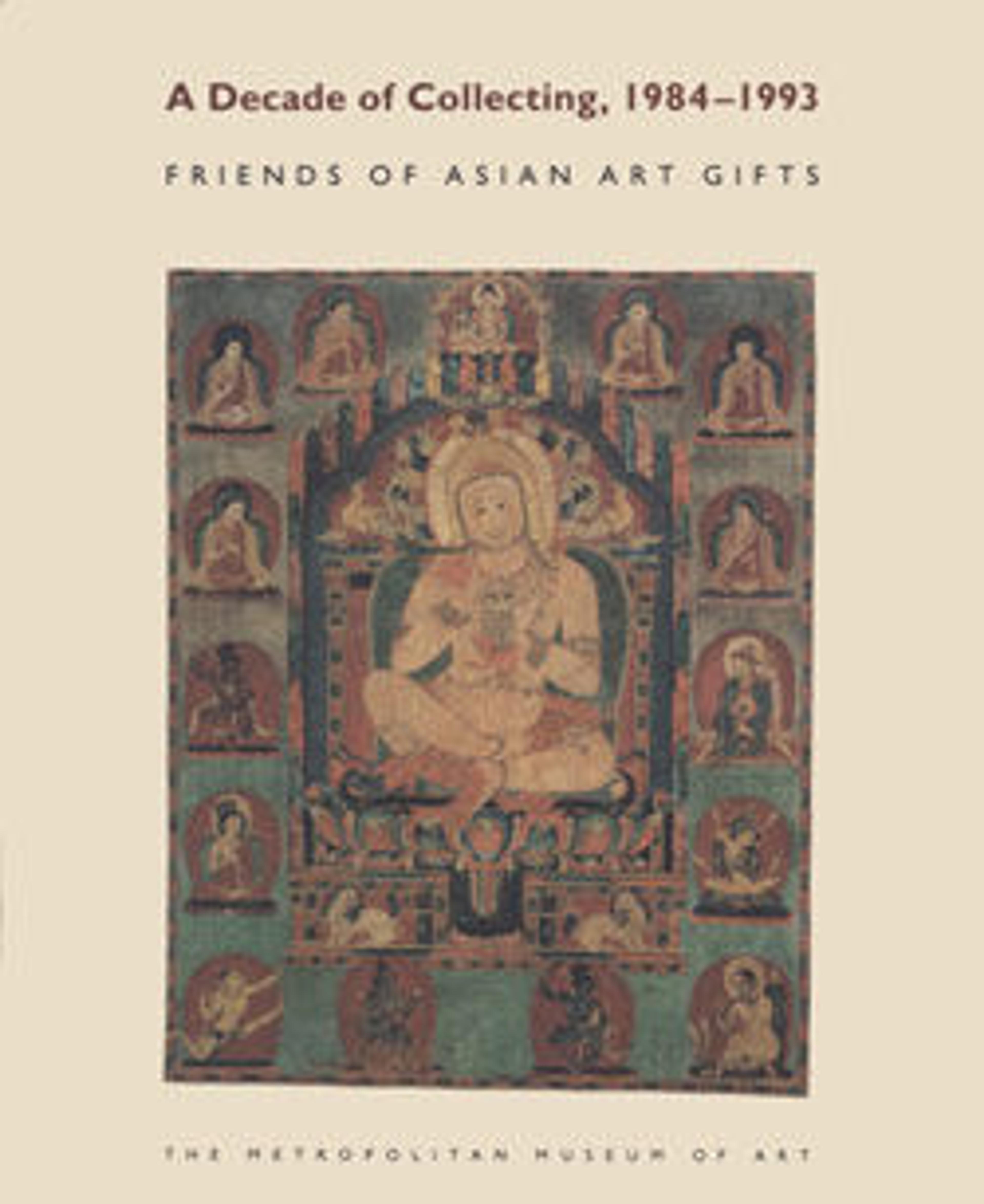Temple Bracket with a Devata Standing on a Hermit Sage
Restituted
This artwork was restituted in April 2023. It is no longer in the museum’s collection.South Asian temples were often conceived as the cosmic mountain abode of a god, and their exterior frequently inhabited by a profusion of auxiliary deities, including nature spirits. The lofty, multitiered wooden temples of the Kathmandu valley are of this type. Their roots are supported by cantilevered roof struts typically carved with figures of beautiful celestial maidens standing on the backs of male dwarf figures. These figure types hark back to yakshas and yakshis, ancient Indian incarnations of abundance. The female figures (yakshis) were often associated with trees, and their touch was believed to bring them into flower.
This temple strut is carved with a devata standing on a hermit sage. The hermit sage is seated on a stylized rock from which grows a flowering tree. The devata stands in an unusual pose, with left foot held at mid-hip level aided by a strap held in her right hand. The use of a strap seems to indicate that she is practicing a yogic posture.
This is a particularly fine example of early Nepalese wood carving. The volumes and poses of the figures are beautifully realized and the surface decorations skillfully rendered. The artist's juxtaposition of the angular forms of the lower third of the sculpture with the more curvilinear and sensuous forms of the upper parts is especially pleasing and inventive.
This temple strut is carved with a devata standing on a hermit sage. The hermit sage is seated on a stylized rock from which grows a flowering tree. The devata stands in an unusual pose, with left foot held at mid-hip level aided by a strap held in her right hand. The use of a strap seems to indicate that she is practicing a yogic posture.
This is a particularly fine example of early Nepalese wood carving. The volumes and poses of the figures are beautifully realized and the surface decorations skillfully rendered. The artist's juxtaposition of the angular forms of the lower third of the sculpture with the more curvilinear and sensuous forms of the upper parts is especially pleasing and inventive.
Artwork Details
- Title: Temple Bracket with a Devata Standing on a Hermit Sage
- Date: 13th century or later
- Culture: Nepal (Kathmandu Valley)
- Medium: Wood
- Dimensions: H. 39 1/2 in. (100.3 cm); W. 5 3/4 in. (14.6 cm); D. 3 1/2 in. (8.9 cm)
- Classification: Woodwork
- Credit Line: Purchase, Friends of Asian Art Gifts, 1988
- Curatorial Department: Asian Art
More Artwork
Research Resources
The Met provides unparalleled resources for research and welcomes an international community of students and scholars. The Met's Open Access API is where creators and researchers can connect to the The Met collection. Open Access data and public domain images are available for unrestricted commercial and noncommercial use without permission or fee.
To request images under copyright and other restrictions, please use this Image Request form.
Feedback
We continue to research and examine historical and cultural context for objects in The Met collection. If you have comments or questions about this object record, please complete and submit this form. The Museum looks forward to receiving your comments.
